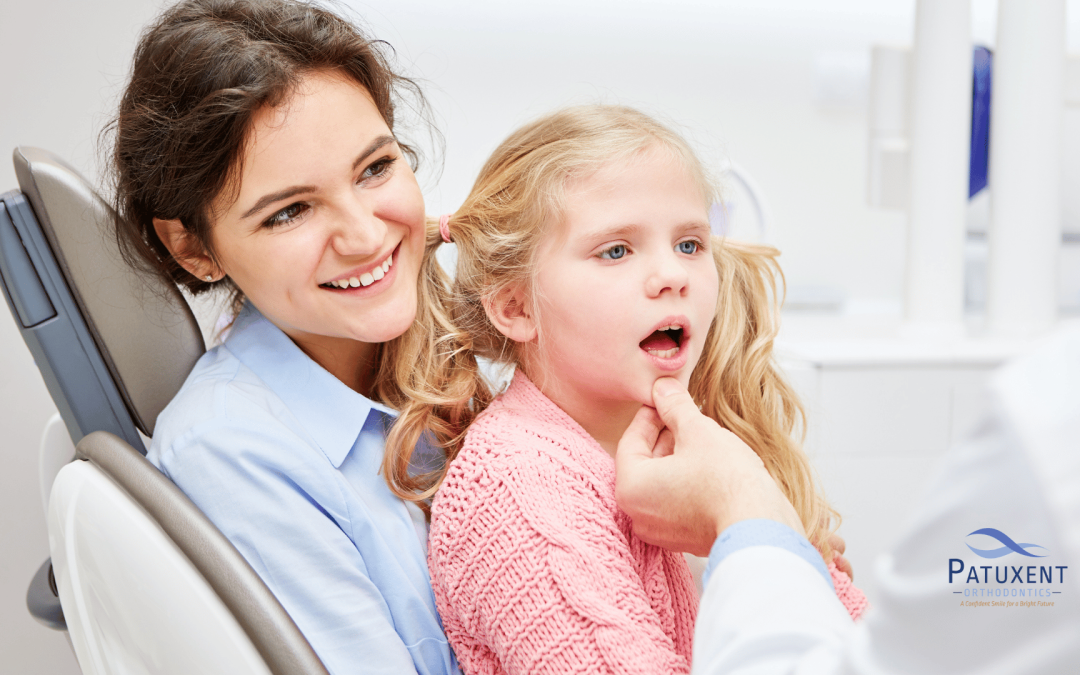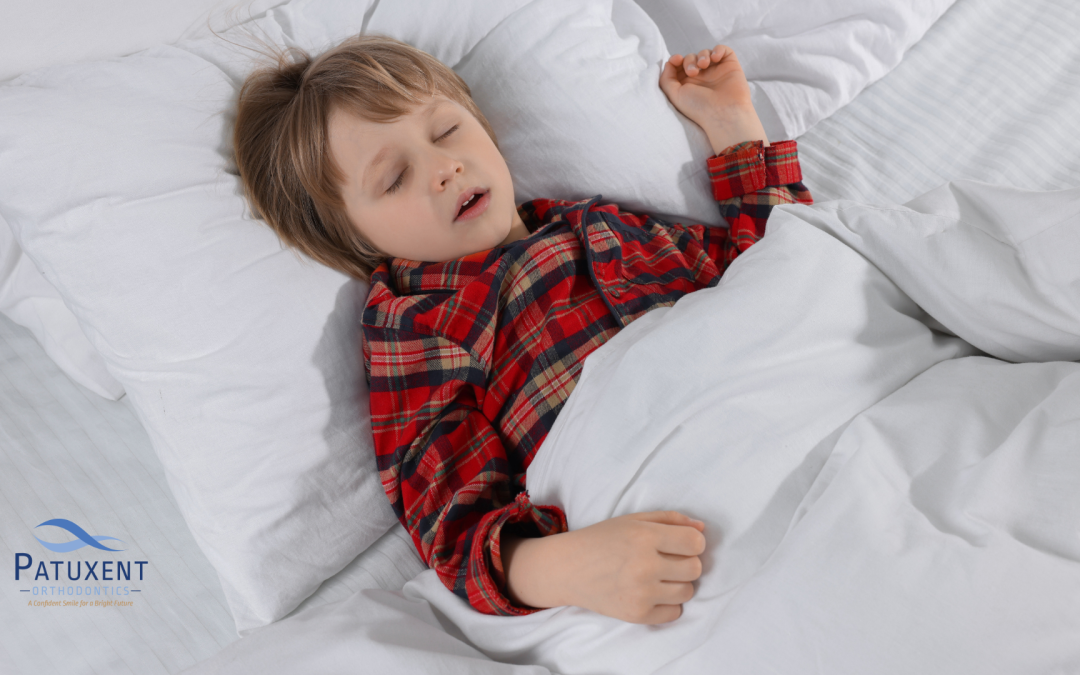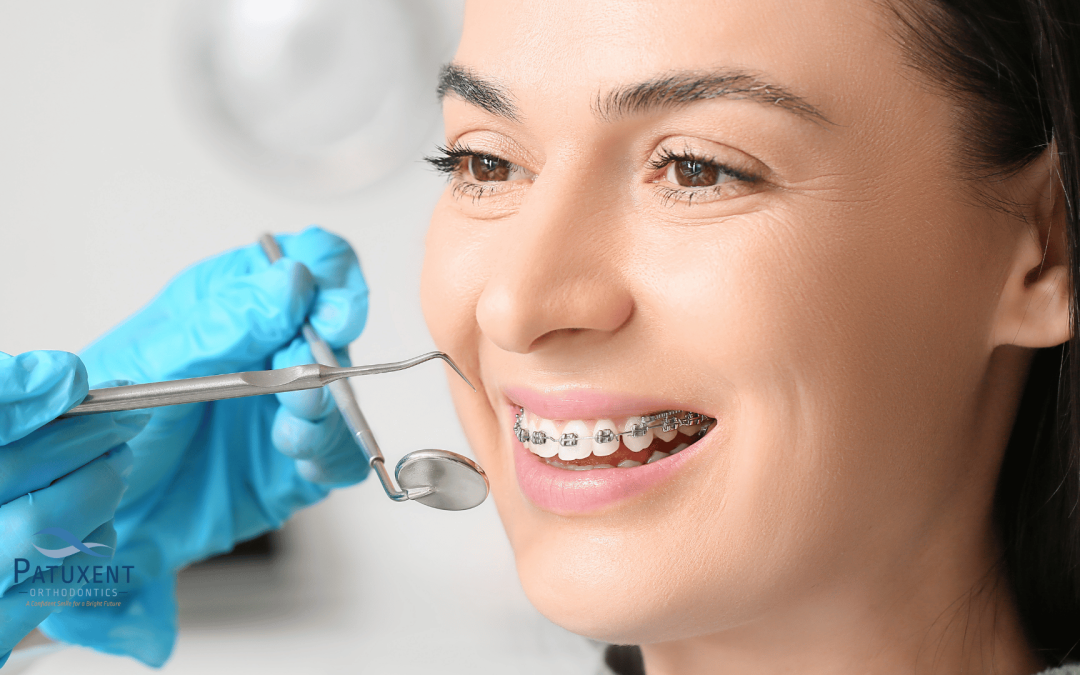We’ve all been there—you’re scrolling through photos and pause on a picture where you’re standing next to someone with a bright, white smile. That’s when it hits you—your teeth look much more yellow than you realize!
It’s a moment that can be unsettling, even a little embarrassing. But why does this happen?
The truth is that tooth discoloration is common. From your morning coffee to your genetics, a surprising number of factors are at play.
We’ve shared 11 causes of tooth discoloration to help you understand why your smile might not be as bright as you’d like—and what you can do about it.
What is Tooth Discoloration?
Tooth discoloration refers to any change in the natural color of your teeth, leading to a yellowish, brownish, or even grayish appearance.
It’s a common issue that affects many people and can result from various factors. While tooth enamel is naturally white, it’s also porous, meaning it can absorb pigments from food particles, beverages, and tobacco. Over time, these pigments can cause tooth stains that alter the color of your teeth.
Tooth discoloration isn’t just a cosmetic concern—it can also indicate underlying oral health issues, such as tooth decay or gum disease.
3 Types of Tooth Discoloration
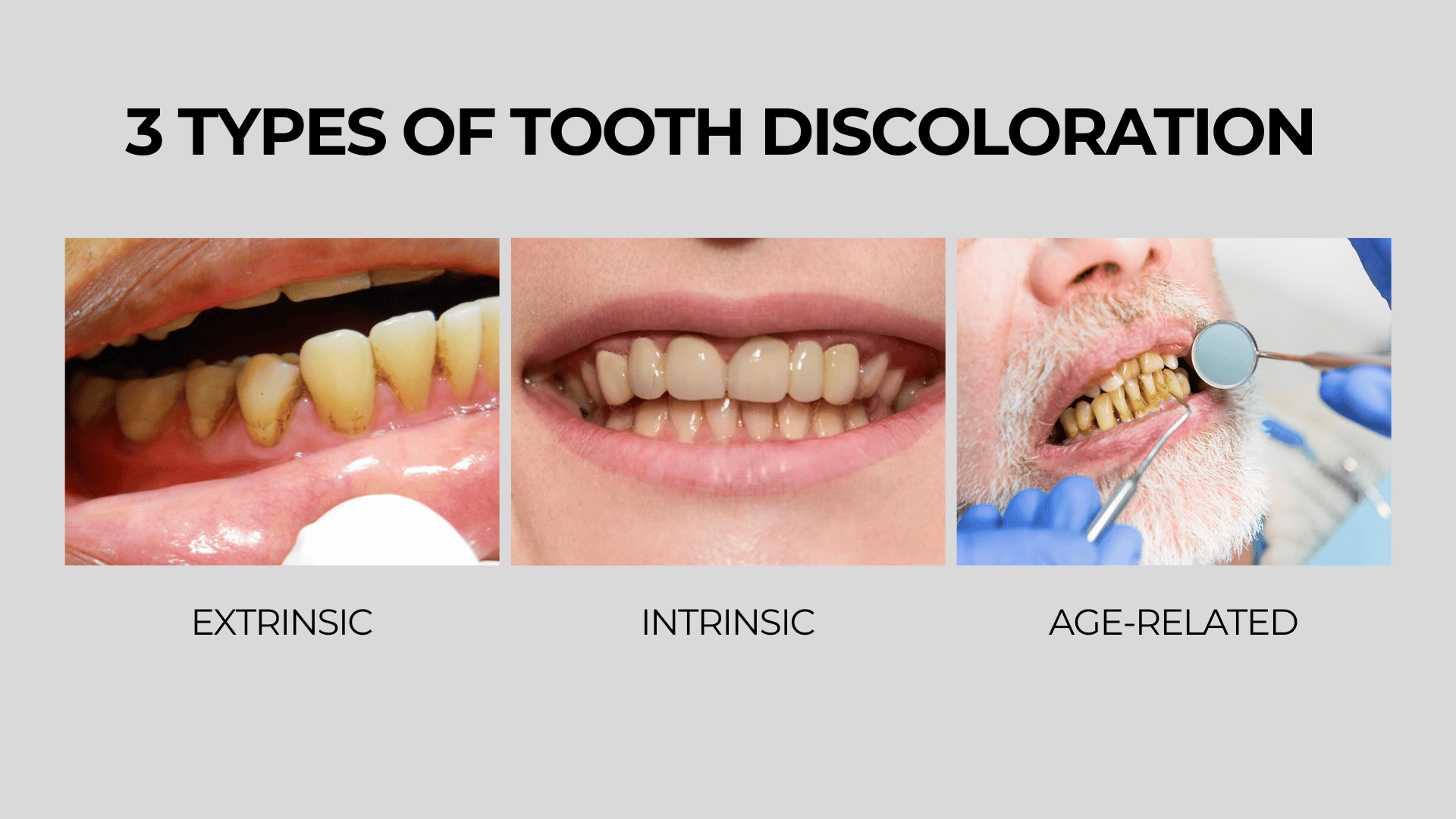
Extrinsic Discoloration
Extrinsic tooth discoloration is caused by external factors that stain the surface of the tooth’s enamel. These surface stains are often due to lifestyle habits, such as drinking dark-colored beverages like coffee, tea, or red wine or using tobacco products like cigarettes and chewing tobacco.
Foods and drinks high in pigments, such as berries or tomato sauce, can also stain teeth.
Poor dental hygiene exacerbates extrinsic discoloration, as food particles and plaque accumulate on the teeth, making them more susceptible to staining.
Intrinsic Discoloration
Intrinsic discoloration occurs when the discoloration originates from within the tooth itself. It is often more challenging to treat than extrinsic stains because it affects the dentin, the layer beneath the enamel.
Common causes of intrinsic discoloration include exposure to certain medications like antibiotics, excessive fluoride during childhood, and dental trauma.
Other contributing factors include medical treatments like head and neck radiation, liver disease, and metabolic diseases. Even a calcium deficiency or celiac disease can influence the tooth’s color.
Age-Related Discoloration
Age-related discoloration is a natural part of the aging process and is influenced by both intrinsic and extrinsic factors. As we age, the enamel on our teeth gradually wears down, making the dentin underneath more visible.
This dentin is naturally yellowish, and as it becomes more exposed, the overall color of your teeth changes. Additionally, years of consuming dark-colored foods and drinks, along with potential gum disease or tooth decay, can further discolor teeth.
Age-related tooth discoloration is also exacerbated by a lifetime of accumulated extrinsic stains from substances like coffee, wine, and tobacco.
What Different Tooth Colors Mean
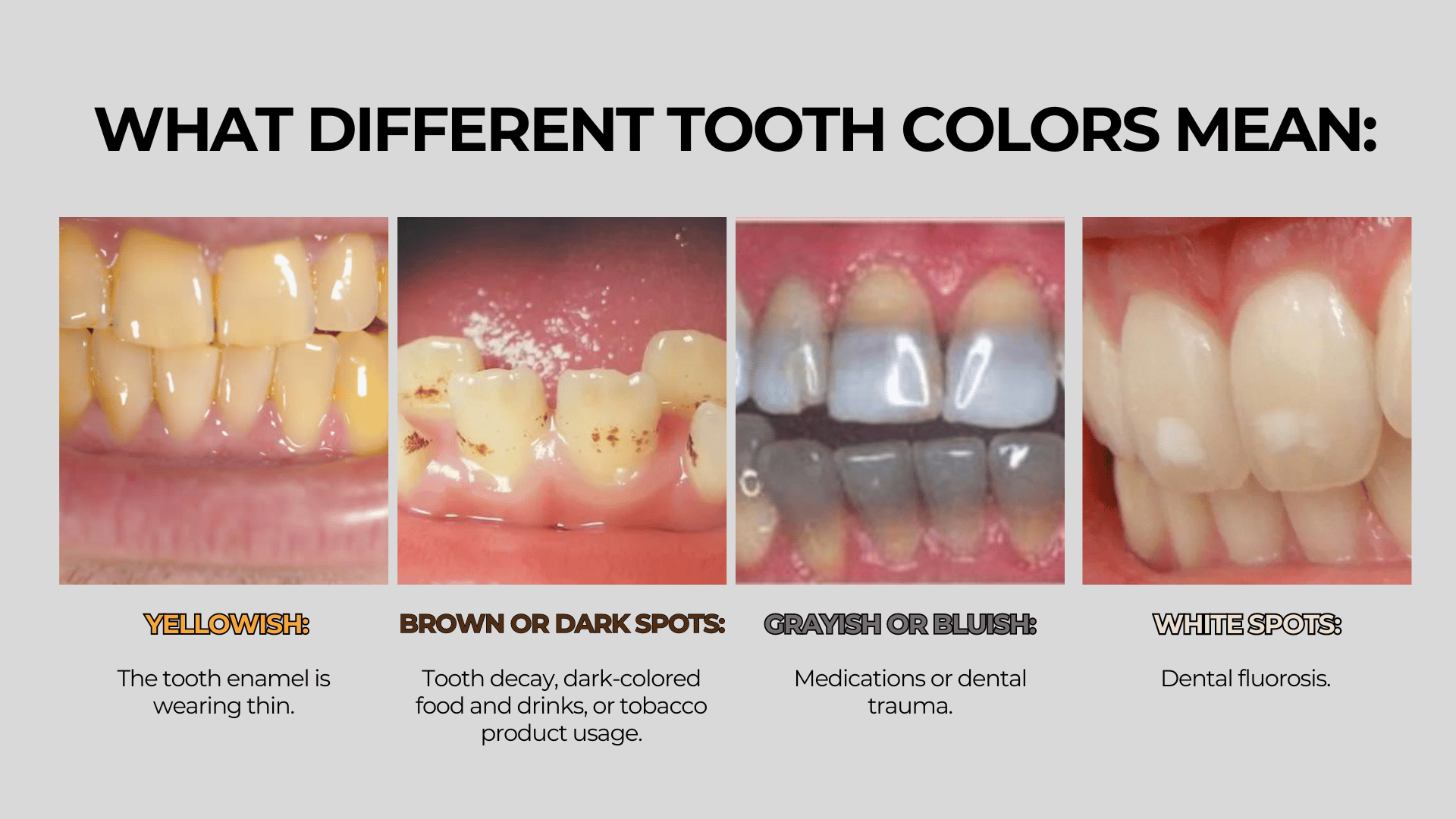
The color of your teeth can reveal much about your oral health and the underlying causes of tooth discoloration:
- Yellowish teeth are often a sign of tooth enamel wearing thin, exposing the dentin underneath, which is naturally yellow. This can result from aging or poor oral hygiene, accelerating enamel erosion.
- Brown or dark spots on teeth might indicate tooth decay, excessive consumption of dark-colored foods or drinks, or the use of tobacco products.
- Grayish or bluish teeth could be linked to certain medications, like antibiotics, or dental trauma that damages the tooth’s nerve.
- White spots on the teeth might result from too much fluoride during enamel development, leading to a condition known as dental fluorosis.
11 Common Causes of Discolored Teeth

- Poor Oral Hygiene: Inadequate brushing and flossing allow food particles and plaque to build up, leading to surface stains and discolored teeth.
- Diet: Consuming dark-colored foods like berries, curry, and red wine can stain teeth over time. Certain foods high in acids, like citrus fruits, can also erode enamel, making teeth more prone to discoloration.
- Tobacco Use: Smoking, vaping, and chewing tobacco are major causes of extrinsic tooth discoloration, leaving teeth with yellow or brown stains.
- Medications: Antibiotics like tetracycline and some antipsychotic drugs can cause intrinsic discoloration during tooth development, leading to grayish or brownish teeth.
- Fluoride Exposure: Excessive fluoride from drinking water, supplements, or mouth rinses during childhood can result in white streaks or spots, known as fluorosis.
- Aging: As you age, the outer layer of enamel wears away, exposing the yellowish dentin underneath. The aging process naturally discolors teeth.
- Dental Trauma: Injury to a tooth, especially in children with developing adult teeth, can disrupt blood flow or damage the nerve, leading to a darkened tooth.
- Medical Conditions: Conditions like celiac disease, liver disease, or metabolic diseases can affect tooth color due to the impact on enamel development.
- High Blood Pressure and Certain Medications: Some medications prescribed for high blood pressure and other conditions can discolor teeth as a side effect.
- Dental Materials: Fillings, particularly those made from metal or silver amalgam, can lead to a gray or black tint around the restored area.
- Environmental Factors: Exposure to head and neck radiation or neck radiation therapy can result in significant tooth discoloration due to changes in the structure and color of the tooth’s enamel.
The 3 Best Treatments for Discolored Teeth

- Professional Teeth Whitening: For the most dramatic results, teeth whitening treatments performed by a dentist are the gold standard. These treatments use high hydrogen or carbamide peroxide concentrations to effectively break down stains on the tooth’s enamel and dentin underneath. In-office procedures often involve light or laser activation to accelerate the whitening process, offering noticeable results in just one visit.
- At-Home Whitening Kits: Professional-grade whitening gel provides a convenient option for those who prefer to whiten their teeth at home. These kits use a lower concentration of hydrogen peroxide than in-office treatments but still deliver good results over time, particularly for extrinsic stains caused by dark-colored foods and red wine.
- Over-the-Counter Whitening Products: While less potent than professional options, there are various whitening strips, whitening toothpaste, and other over-the-counter products on the market that are effective for mild to moderate stains. These products are handy for maintaining the results of professional treatments and preventing new stains from forming.
5 Ways to Prevent Tooth Discoloration

Preventing tooth discoloration is all about maintaining good oral hygiene and being mindful of what you expose your teeth to:
- Practice Good Dental Hygiene: Brushing your teeth at least twice a day with fluoride toothpaste helps remove food particles and plaque, reducing the risk of surface stains and tooth discoloration.
- Limit Stain-Causing Foods and Drinks: Avoid dark-colored foods like berries, coffee, and red wine. When you do indulge, rinse your mouth afterward or use a straw to minimize contact with your teeth.
- Quit Smoking and Tobacco Use: Smoking and chewing tobacco are major culprits behind extrinsic stains and yellowing teeth. Quitting can not only improve your overall health but also prevent further discoloration.
- Use Whitening Toothpaste: Incorporating whitening toothpaste into your daily routine helps remove minor stains and prevent new ones from forming. Look for products that contain mild abrasives and low concentrations of bleaching agents.
- Regular Dental Visits: Scheduling routine cleanings ensures that any buildup of plaque and tartar is removed, preventing tooth discoloration. We provide personalized advice on preventing and treating discoloration based on your oral health.
Take Action against Tooth Discoloration at Patuxent Orthodontics!
Contact Patuxent Orthodontics if tooth whitening is the solution to your dental woes. Whether you want to learn more about the benefits of orthodontic care or have questions about the process, use our live chat, call (240) 802-7217, or message us through our Contact Us page to connect with our friendly staff today and book a complimentary consultation!
Our office, located at 44220 Airport View Dr., Hollywood, MD 20636, proudly serves Maryland’s Patuxent area, as well as the Greater Washington DC area.
So, if you’re residing in Hollywood, Wildewood, or Leonardtown and are looking for one of the best orthodontists in Maryland, don’t hesitate to visit our office!
We also invite you to keep up with our blog to get answers to many of the frequently asked questions about maintaining your perfect smile, and follow us on Facebook and Instagram to become a part of our smiling community!


